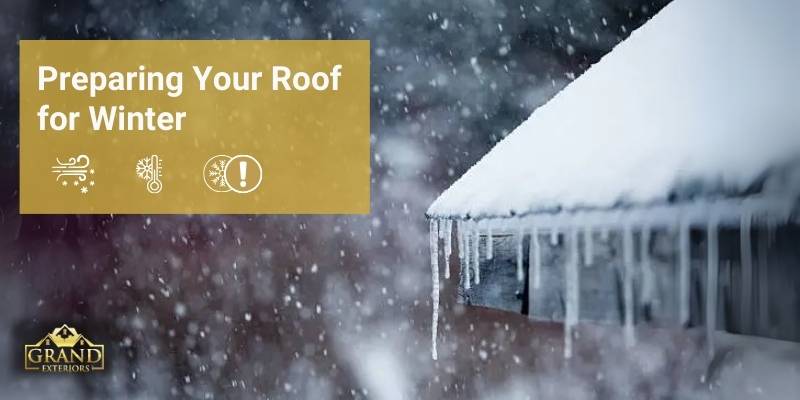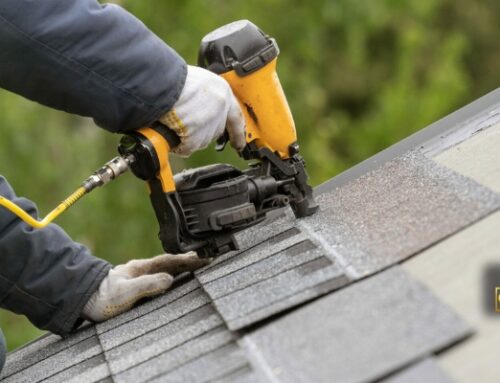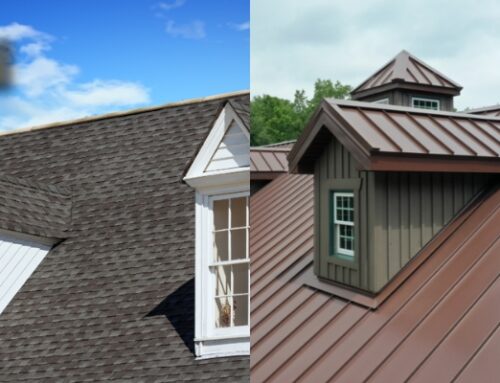As winter is coming, do you have your roof in your worry list already? Can your roof survive heavy weather conditions throughout winter? To get rid of this thought, you need to take the necessary steps to prepare the roof.
Winterization of the roof is important as it helps the house escape other costly repairs as well as preserve its usefulness for the winter season. A roof plan may allow you to prevent some typical winter ailments like leaks, ice dams, and weather-induced structural impairment.
We have prepared a comprehensive guide that will cover key roof inspection tips, strategies for managing snow and ice, preventing ice dams, and making necessary repairs before winter strikes. A thorough maintenance program and appropriate seasonal care therapies provide ample buffer against potential winter and internal roof damage and help preserve the roof for a longer period.
It covers everything from ensuring your roof is insulated to ventilated, to some unique winter weather problems.
Every homeowner should ensure their roofs are winter-ready so that they could resist the worst of the weather. If the roof is in bad shape, snow and ice can wreak havoc on your roof. Perform these fast roof winterization and winter roof maintenance tips to keep your house snuggle-safe all winter long.
1. Roof Inspection: The Initial Level of Winter Protection
- Detection of Leaks: You should be restlessly vigilant for leaks, especially around vents, skylights, and dealing with chimneys.
- Make sure none of the shingles have broken or disappeared; fix them, and in any case, be sure all of yours are in working order to deflect any water from entering your home. This requires replacing broken or missing shingles.
- Roof Flashing: Check to confirm that the flashing alongside the chimney and at the base of the roof is tight, secure, and intact.
2. Winterizing Your Roof to Ward Off Winter Damages
- Strengthened Roof Structure: Building strength in the roof allows it to hold the treats in heavy snow and ice.
- Clear gutters and downspouts: Backup of water behind shingles can usually lead to leaks and water damage because of the clogging of the gutters. Avoid leaving leaves and other debris in the gutters.
- Seal breaches: Ensure that any holes and cracks in every bit of the roofing material are sealed to help stop drafts and the intrusion of water.
3. Protecting Against Snow and Ice: Important for Winter
- Ice and Water Shields: This type of protective barrier would be built chiefly in areas where ice dams are likely to form and prevent water from backing up and leaking along the eaves of your roof.
- Consider snow guards: Snow guards should be installed to prevent large snow loads from dropping off your roof suddenly since this can be dangerous and harm people or property.
- Method of Snow Removal: Equip yourself with a roof rake for snow removal so that you can do it safely after heavy storms.
4. Prevention of ice dams: Take measures to make sure the roofing is leak-proof.
- Insulate the attic: A poorly insulated roof allows heat to escape, causing melting snow and ice dams to form at the eaves.
- Add proper ventilation in the roof: An even temperature across the roof prevents ice dams.
- Safely eliminate icicles: Get rid of large icicles hanging from the eaves to prevent further pressure on the roof and gutter.
5. Checklist for Roof Maintenance: Mandatory for Homeowners
- Check and keep the gutters clean, where freezing conditions are expected, to allow unrestrained flow of water.
- Examine roofing materials for broken or cracked tiles, shingles, or shakes, and replace them immediately.
- Insulate the attic well enough so as to prevent rapacious escapes of heat and melting of snow on the roof.
6. Winter Roofing Tips: What You Ought to Know
- Avoid Walking on the Roof: Snow and ice make roofs slippery, increasing falls and danger critical damage.
- Get It Done by a Pro: Call a professional roofing contractor for an inspection of your roof without hesitation, especially if you aren’t certain that it is hail and high wind-hardy.
- Location: The roof should have an adequate drainage plan to take away water from your building.
7. Winter Roof Repair: Grasping Damage before it Worsens!
- Immediate Leak Repairs: Small leaks can snowball into huge problems during the winter, a situation where water damage is general, and the sprouting of mold takes little or no time at all.
- Replacement of Damaged Shingles: Missing, loose, or broken shingles should be replaced to prevent intrusion of water.
- Seal Vents and Flashing: Check for openings in the flashing surrounding vents and chimneys that may allow leaks to occur and apply a sealer to these openings.
8. Seasonal Roof Care: How to Maintain Your Roof
- Monitor Roof Condition Regularly: Regular checks throughout the winter help spot any potential problems early.
- Proper Insulation: This limits the loss of heat and keeps it warm, even preventing the formation of ice dams.
- Check for Standing Water: Water on the roof can cause leaks and damage. Ensure that your roof is designed to let water flow off efficiently.
9. Roof Preparation for Cold Weather: Ensuring Maximum Protection
The attic is installed with insulation, which reduces the amount of heat escaping from a house and keeps the roof temperature constant.
- Check roof leaks in the attic: see that there are no apparent leaks in the attic that may be worsened by the freezing temperatures.
- Check the structural integrity of the roof: Ensure that your roof can truly carry heavy snow and ice.
10. Protective Roofs from Winter Damage: Best practices.
- Install a roof edge protector: A roof edge protector will prevent snow sliding off, which can otherwise damage the roof or cause injury.
- Ensure proper draining: Check or install drainage systems such as gutters, downspouts, and downspouts to avoid accumulation of ice and water leaking.
- Proper roof insulation and ventilation: Use proper insulation and make sure it is spread out in the attic, and use a proper ventilation system.
Here are the steps and tips to keep your roof safe during the winter and in reasonably good condition through the colder months. Correct winterization and basic roofing upkeep can go a long way in preventing costly repairs and prospective damages.
Contact US for Residential Roofing in Minneapolis MN!
We are a panel of certified licensed roofing professionals. We’ve been doing residential roof work in Minneapolis for many years.
At Grand Exteriors, we don’t mark a project finished unless backed by your satisfaction. So, for reliable and top-notch residential roofing in Minneapolis MN, contact us today!




